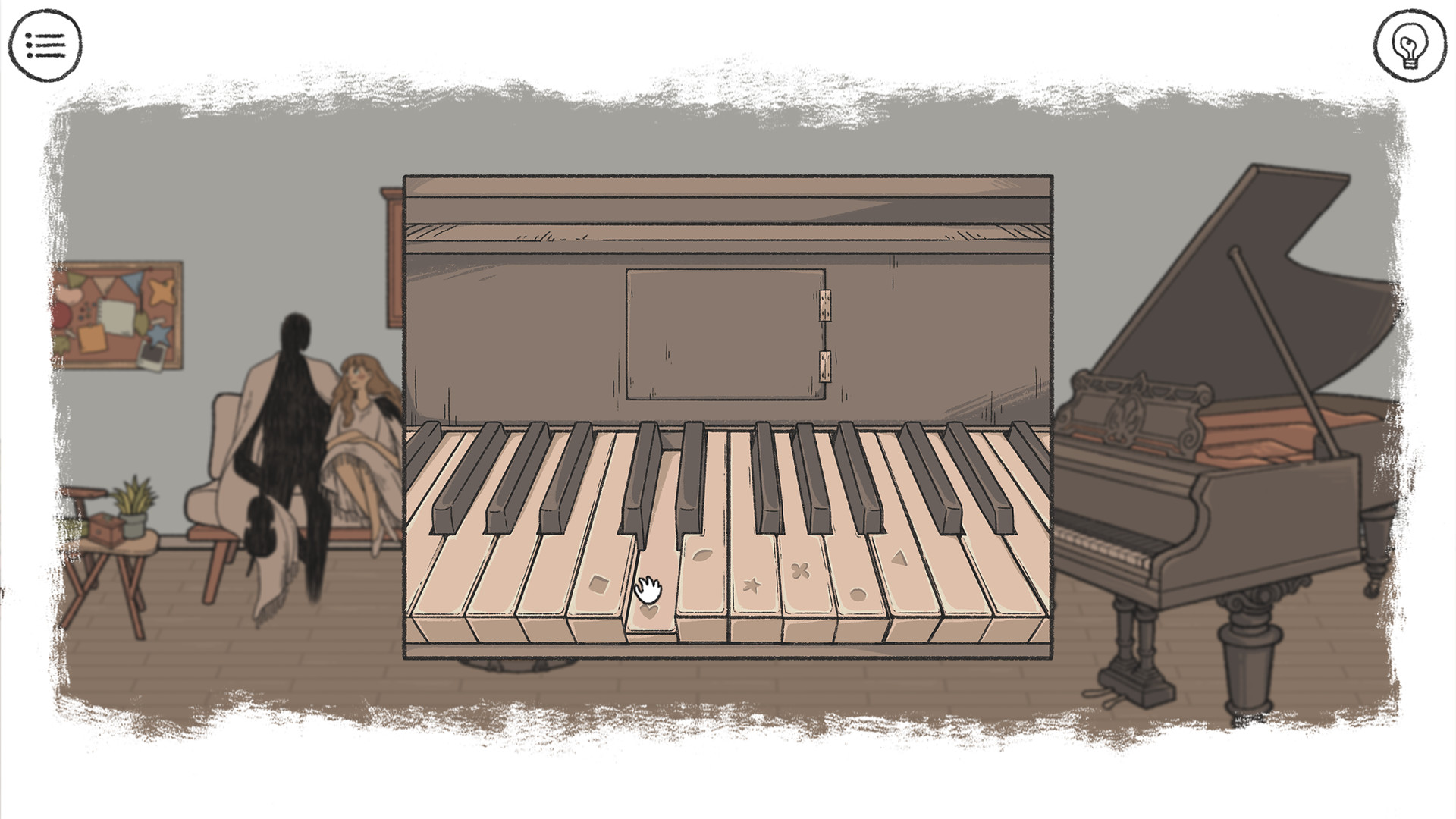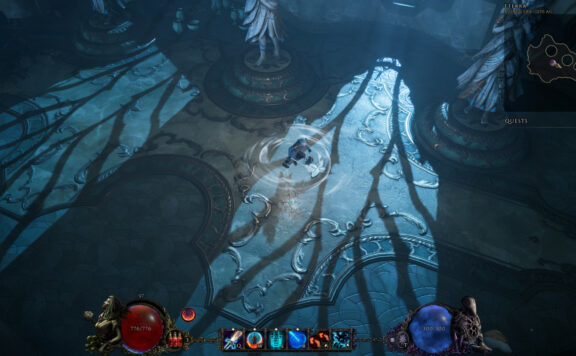When The Past Was Around is an enjoyable point-and-click puzzle game with beautifully hand-drawn graphics and a deep story that hits seemingly close to home considering the past year. Developed by the talented team over at Mojiken Studios, When The Past Was Around starts us off by introducing us to the young woman whose heartbreaking story we’ll begin unraveling: Eda.
A light, musical motif, surrounded by a gorgeous art style, and lovably crafted character designs for our protagonists- this game pretty much hits every nail on the head when it comes to creating a comfortable and homey atmosphere for the player. Go ahead, prop your feet up, relax. Enjoy When the Past Was Around. Surely, absolutely nothing bad could happen here.

Owl hands Eda a feather, letting her know it’s okay to move on.
Lured into a false sense of security, we’re introduced to the charming characters of Eda and Owl, two friends who met through their shared passion for music and quickly became soulmates. When The Past Was Around is filled with oodles of symbolism and details for you to unravel. Clearly, Eda isn’t really dating an owl, but to her, her lover is best symbolized by the majestic creature. It’s never clearly stated why she associates him with such, but my theory is she has based it on his intelligence and knowledge, maybe even going so far as to associate him as her muse. However, before we can dive too deep into this symbolism, tragedy strikes. Cut to the quick in the prime of his life, Owl vanishes from Eda’s life, leaving her broken and void of any desire to pick up her violin to play.

Like the missing ruby eye, Eda feels like she’s missing a part of herself with Owl gone.
Throughout the rest of the game, we experience the fleeting, happy moments Eda spent with Owl and reminisce on the events that led up to his passing. At its core, When the Past Was Around is about loss, grief, and moving on-but, it’s also about hope. One of the beautiful aspects of the title is that it is somewhat vague at times, and leaves parts of its story up to interpretation from the player. When The Past Was Around can mean many different things to many different people, and it doesn’t try too hard to force its message on you. Instead, the game allows you to experience its narrative alongside Eda, and uncover her story scene-by-scene, as if turning the pages in a book. Except here, you can only go forward. Similarly for Eda, there is no going back. You have to keep moving forward.

Eda and Owl play music together under the stars.
In each memory, there are puzzles to solve and items you must find in order to progress. Some are deceptively simple, while others can have you stumped for quite some time. As you rifle through the boxes looking for clues, I couldn’t help but put myself in Eda’s shoes. She was literally trying to pick up the pieces of her life, and in some ways I felt like the puzzles were a manifestation of this idea. Some puzzles had to do with parts of the scene, where others felt a little out of place, and maybe that’s because Eda was trying to figure it out, too. It isn’t meant to make sense, because oftentimes these things rarely do. As we sit on the floor alongside her, rifling through past memories, Eda is probably wondering how to make sense of the world she now lives in and digging through her past for answers to what she could have done differently. It’s only after the puzzle is complete, that we learn a little more about the scene and why it holds such a special place in her heart.

Many puzzles in When the Past Was Around can be deceptively simple, or extremely frustrating.
The music for When The Past Was Around is uplifting and heartbreaking all at the same time. For the majority of the game, there is a musical motif, or theme that repeats throughout each scene, and we learn very quickly to associate it with our characters. It’s so prevalent and catchy that you can’t even escape it in real life; the melody makes sure to nestle itself in your heart, hiding in plain sight for weeks after you finish the game. Only at the end do we realize that this song was written by both Eda and Owl, and as such we can probably assign it as “their theme”. The developers did an incredible job of scripting the music just perfectly so that it is absent in some of the more pivotal and emotional scenes. The absence of that theme is almost unnerving to some degree and really drives home the point that without Owl, the music from Eda’s life is gone. The joy that she once felt upon hearing the song they created together has all but evaporated.
I won’t ruin the end for those that are looking to play it, but it definitely moved me to tears. I knew going into a playthrough of When The Past Was Around that it would be short, but I wasn’t mentally prepared to let go of Eda and Owl after the two-hour mark. The studio was very transparent about the length of the game, so I absolutely cannot fault them for that, but it was just such a beautifully-crafted game that I hated for it to end so early. I think it’s a wonderful testament to the writers for When The Past Was Around that they managed to develop such a wonderful bond between the player and protagonist in under two hours and managed to hook them into the story from the first scene. Not only is When The Past Was Around a wonderful indie title, but it’s incredibly affordable. At only $7.99 on Steam, with a free prologue demo, you can experience the tale of Eda and Owl for yourself. If you’re a hopeless romantic like me that loves to have their heart shattered into hundreds of pieces over a thought-provoking story, When the Past Was Around is exactly what you’re looking for.
A copy of When the Past Was Around was provided for the purpose of this review.






